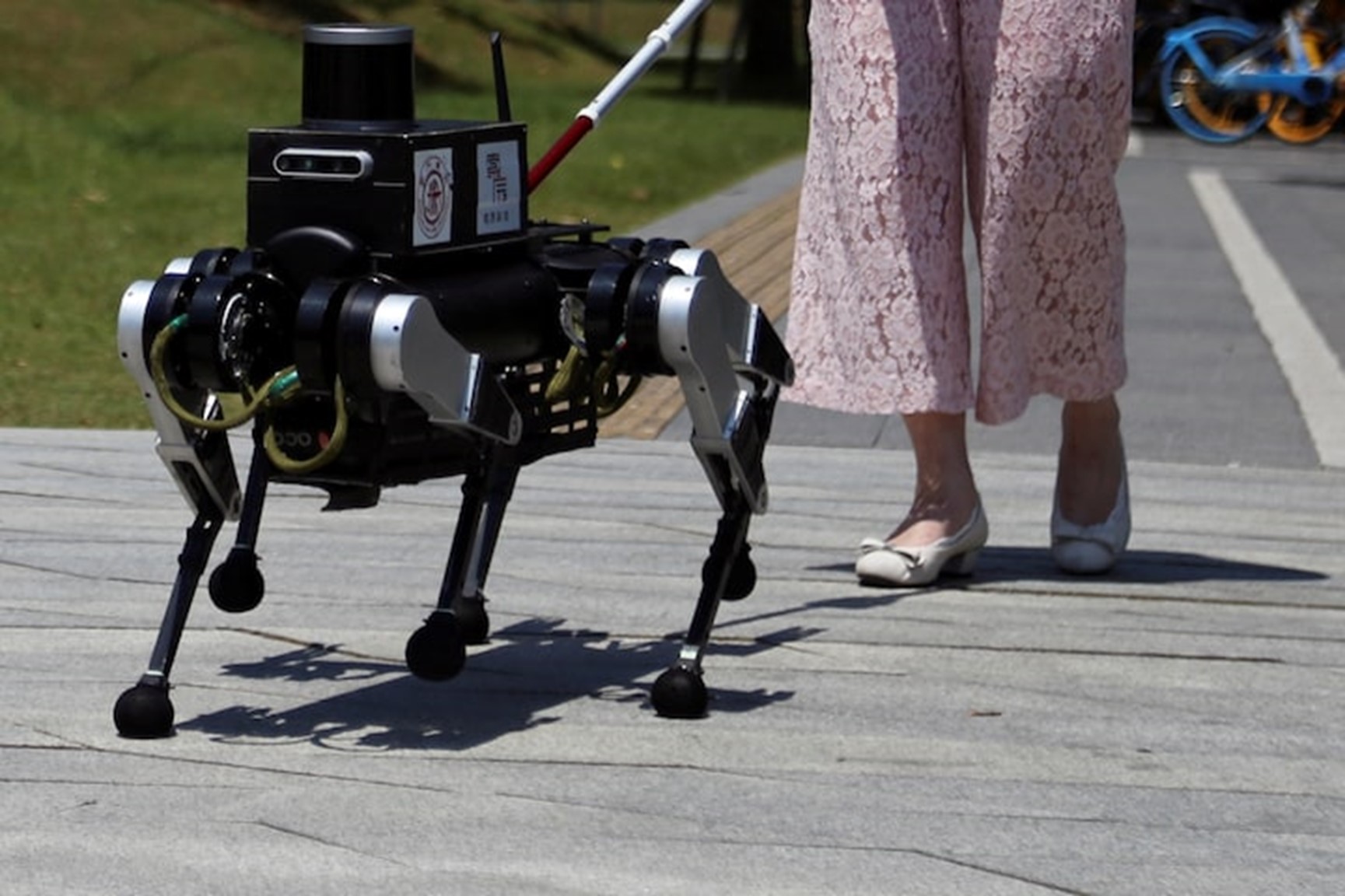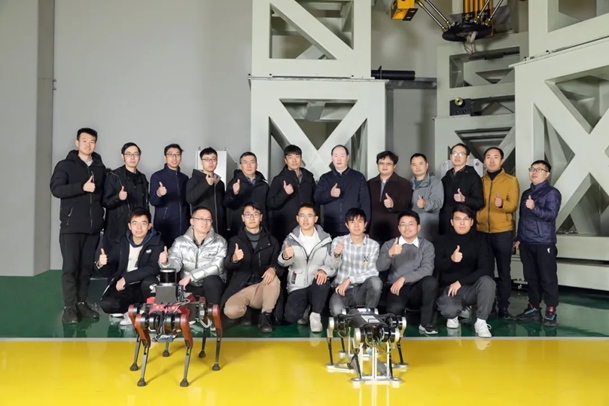
News

News
【REUTERS】- It's less furry than a traditional companion, but a six-legged Chinese robot "guide dog" could one day help vision impaired people live more independently, according to its research development team in Shanghai.
The robot dog, which is currently being field-tested, is able to navigate its physical environment via cameras and sensors, including recognising traffic light signals, which traditional guide dogs are unable to do.
Roughly the size of an English Bulldog but a bit wider, it can communicate by listening and speaking with a visually impaired operator with artificial intelligence technology incorporated into its voice recognition, route planning capabilities and traffic light identification. It also has six legs, which the researchers said helps it walk smoothly and with maximum stability.
"When three legs are lifted, there are still three legs… like the tripod of a camera. It is the most stable shape," said Professor Gao Feng, the head of the research team at Jiao Tong University's School of Mechanical Engineering in Shanghai.
Married couple Li Fei, 41, and Zhu Sibin, 42, are among the visually impaired people helping the Jiao Tong University team test the robot using Chinese-language commands.Li is completely blind and Zhu sees only a little, normally using a cane to assist him in getting around.

A visually impaired person walks with a six-legged robot "guide dog" during a demonstration of a field test for a Shanghai Jiao Tong University test team, in Shanghai, China June 18, 2024. REUTERS/Nicoco Chan
"If this robot guide dog comes onto the market and I could use it, at least it could solve some of my problems in travelling alone," Li said. "For example, if I want to go to work, the hospital or the supermarket (now) I cannot go out alone and must be accompanied by my family or volunteers."
Robot guide dogs are under development in other countries, including Australia and Britain, but China has a drastic shortage of traditional guide dogs.
In China, there are just over 400 guide dogs for almost 20 million blind people, Gao said. Pet ownership and service animals are also relatively new concepts in the country, meaning many workplaces, restaurants and other public areas wouldn't welcome a more traditional helper like a Labrador.
Unlike those dogs, which will always be limited in supply due to the natural limitations of breeding and the intense training required, Gao said the production of robot guide dogs could be scaled, especially in a major manufacturing hub like China.
"It's a bit like cars. I can mass-produce them in the same way as cars, so it will become more affordable," Gao said. "I think this could be a very large market, because there might be tens of millions of people in the world who need guide dogs."
Background Information
This guide robot dog is developed by Professor Gao Feng’s team from the School of Mechanical Engineering at Shanghai Jiao Tong University. The robot integrates auditory, tactile, and force sensing interaction methods. It can quickly respond to and accurately recognize voice commands from visually impaired individuals, with a current voice recognition accuracy rate of over 90% and a response speed of less than one second. The robot can issue commands through voice and simultaneously provide real-time feedback on walking and environmental conditions, achieving intelligent two-way interaction.
The robot currently has a maximum speed of 3 meters per second, capable of meeting the needs of visually impaired individuals for slow walking, fast walking, and running. Its unique six-legged configuration ensures stable walking with low noise.
The guide robot has entered the field-testing stage, with visually impaired individuals participating in offline demonstrations and functionality tests throughout the research process. The team plans to continuously develop and adjust the robot based on real-time feedback from visually impaired individuals in the future.
The practical application of the guide robot not only involves the robot itself but also requires the support of backend big data, a strong operations and maintenance team, and a series of promotional tests. The team has closely collaborated with Suochen Technology to conduct commercial promotion based on the needs of the guide robot, contributing to improving the lives of visually impaired individuals in China.


Shanghai Jiao Tong University
Address: 800 Dongchuan Road, Shanghai
200240